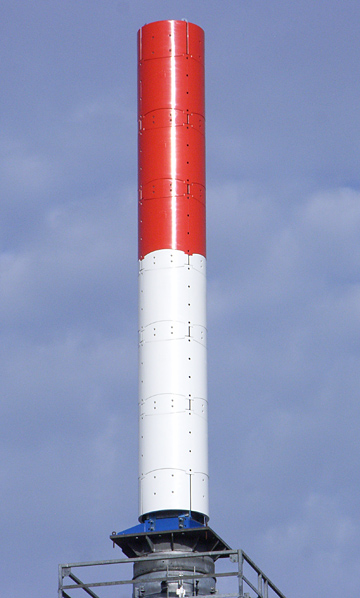Trial Antennas Installed Atop One World Trade Center

This UHF antenna from RFS is similar to the version being installed on top of the World Trade center.
MERIDEN, Conn. —Radio Frequency Systems (RFS), a manufacturer of broadcast antennas and RF components, is providing a test broadcasting solution for One World Trade Center (One WTC) in New York City. The company announced today that it has delivered two trial antennas to be installed in the coming weeks. With the final arrays, broadcasters will be able to set their own polarization ratios, independent of other broadcasters.
Topping out at 1,776 feet, the antenna support makes One World Trade the tallest building in the Western Hemisphere, making it an ideal platform to deliver terrestrial television services to the entire NYC coverage area. Working closely with the Metropolitan Television Alliance (MTVA), The Durst Organization and individual broadcasters, RFS is collecting data from both its UHF and VHF trial arrays to demonstrate how the system and venue will perform.
“Following 9/11 and decimation of broadcast infrastructure in the ruin of the Twin Towers, RFS supplied a standby antenna to help get lower Manhattan television broadcasts back on air. We recognized the tremendous importance of this project at the time and, with One World Trade now rising as the new icon of New York City’s cityscape we are proud to once again be involved,” said Jay Martin, vice president of global broadcast sales for RFS.
RFS had previously provided passive digital antenna system equipment for One World Trade’s main building through a system integrator. RFS is now working on installation of its PEP antenna arrays with variable polarization technology that allow each broadcaster to define its own polarization ratio. With other manufacturers, the polarization ratio is fixed and must be agreed upon by all broadcasters using a common antenna. The Durst Organization, manager of the One WTC property, wanted a future-proof solution that would offer maximum flexibility to all broadcasters.
Installed at the top is a UHF array of eight-levels on a single face, the PEP8A, and below it is the VHF 662-4A antenna. The test antennas are required to prove the vertical radiation patterns and system performance from the One WTC site as the first step in getting to a final configuration.
“These tests will demonstrate the advantages of broadcasting from this state-of-the-art site, and we’re very happy that RFS is supporting our efforts with their antenna systems,” said John Lyons, assistant vice president and director of broadcast communications at The Durst Organization. “We believe that One World Trade Center will become the premier transmission site for over-the-air TV and FM radio broadcasting.”
The professional video industry's #1 source for news, trends and product and tech information. Sign up below.
Bob Kovacs is the former Technology Editor for TV Tech and editor of Government Video. He is a long-time video engineer and writer, who now works as a video producer for a government agency. In 2020, Kovacs won several awards as the editor and co-producer of the short film "Rendezvous."

